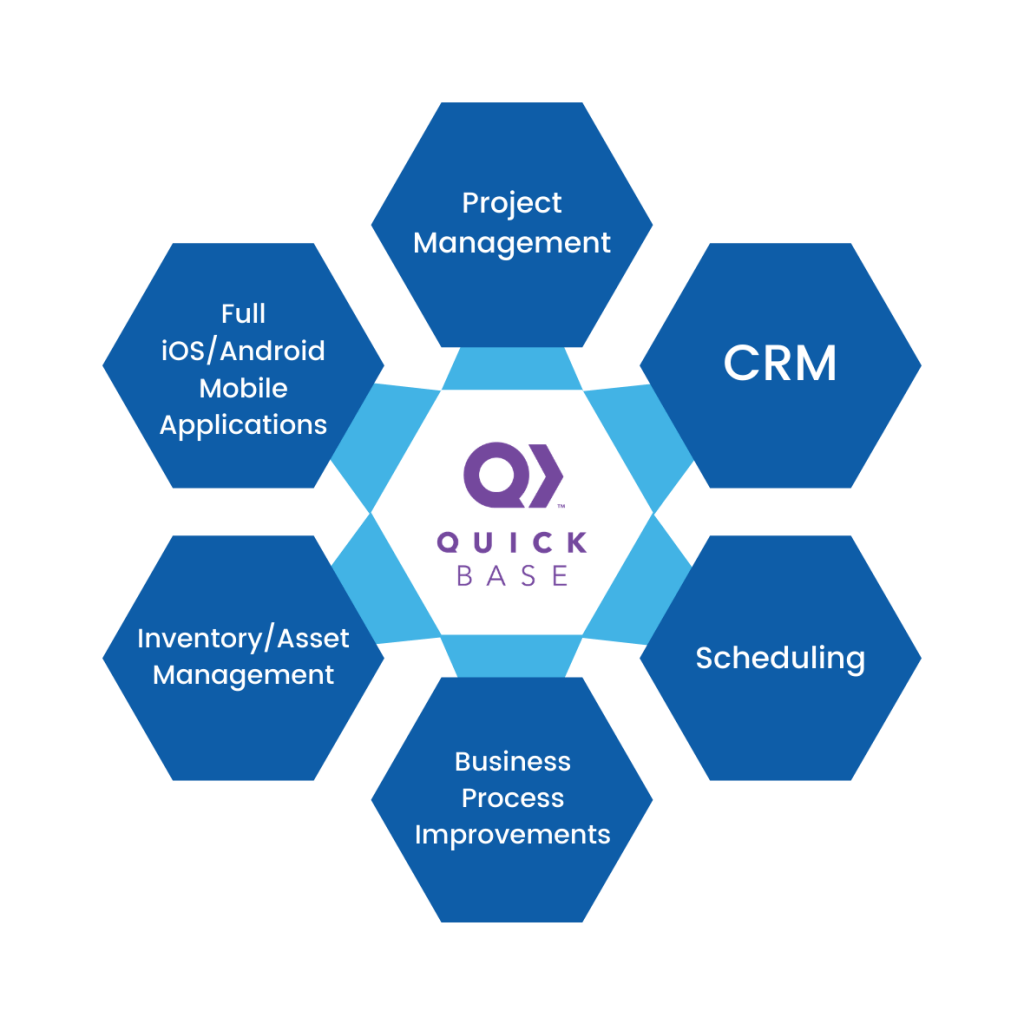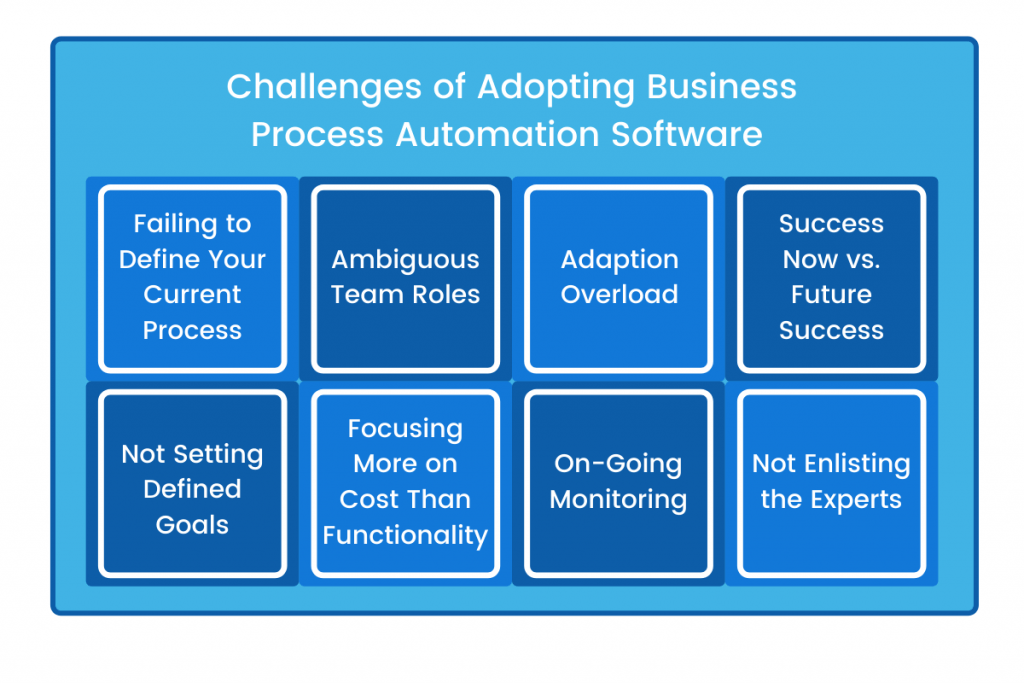
Common Mistakes When Switching to a Business Process Solution
Are you looking to automate aspects of your business? Development platforms such as Quick Base are known as low code software and are perfect for companies who want to create online business process apps. In fact, you can tackle almost any type of digital business requirements such as:

In fact, low-code development platforms are probably the best bang-for-your-buck investment if your company needs to develop custom business process improvements or applications.
Creating workflows can eliminate the grind out of tedious or ineffective manual labor, saving your company time while boosting efficiency. Because of the vast array of benefits, many businesses jump headfirst into implementation without thinking about the many caveats involved in transferring your manual processes to automation software. As Quick Base consultants with an expertise in business process improvement, we at Trinity have seen repeated mistakes that occur with implementation and what challenges caused them.
Like anything in life worth having, you have to plan for success. Let’s examine issues that may arise and how you can avoid them.
The Challenges of Adopting Business Process Software

There can be some big pitfalls when it comes to switching to a new business process software like Quick Base without the help of a consultant. Some of the common issues that come up while making the switch solo include the following:
Failing to Define Your Current Process
The only way to see where your process needs fixing is to know what it is to begin with. We see many, many businesses say they need software to improve their processes but can’t pinpoint where or how their current system is flawed. Jumping into the software without knowing exactly where you need it most can lead to spending much more on features you don’t need.
Ambiguous Team Roles
It’s important to know who will be doing what in terms of finding and implementing the new software. Not defining what each team member roles do can lead to miscommunication and significant implementation delays. Make sure you know exactly who is involved in decision making, roles on the project, timelines, and so on. Outline whether there will be external contractors and specific areas on outsourcing versus in-house management.
Adaption Overload
Ever heard the saying “don’t bite off more than you can chew”? This absolutely applies to implementing business process improvement solutions. Automating complex business processes can be difficult when you want to adapt everything at once. It’s easy to take on a project too quickly, especially if your workflow software is ready to be used. Instead, separate implementation into multiple stages. For example, start with a single workflow for your automation process. Once it’s been tested, move on from there, process by process.
Success Now vs. Future Success
It’s important to plan for future success, but when it comes to business process change it’s important to clearly define what you need for success now and what you can implement in the future. Failing to do so will not only create an adaption overload in the point above but can also easily cause project scope creep. This also allows developers to create the baseline application structure to be ready to accommodate for the known future needs.
Not Setting Defined Goals
We’ve seen many clients fail to define specific goals aside from the general ‘automate our workflows.’ If you’re designing a new workflow, create clear goals that have a measurable timeline. It can be useful to hire an outside developer with extensive business process background who can steadily guide your business process improvement and application development. If not, ensure that you define the steps of the entire process in a quantifiable, sequential order.
Focusing More on Cost Than Functionality
Another famous saying is “you get what you pay for”. This extremely relevant with choosing not only the solution you will use, but also who will build it out. Even if you choose an solution that is considered ‘low-code software’, you need to know if it’s powerful enough for your goals and if you have the in-house staff that can manage it. If there’s a large learning curve, you’ll need to get some outside help or choose another solution that can be handled in-house. Often businesses will choose a less than optimal product or low-cost developer based solely on pricing. Defining what is a need vs. a want for your automation software will help you create a more realistic budget and set you up for success.
On-Going Monitoring
Far too many companies successfully migrate to a more efficient workflows only to forget about it. Make sure that your solution allows you to monitor your metrics to determine ROI and error rates. Are there any new pain points or issues that arise after the software has been implemented? Assign an in-house project manager or utilize your developer to monitor the program moving forward.
Not Enlisting the Experts
You’d be surprised at how fast and affordable outsourcing business process improvements and application development can be. Deploying external experts for a limited amount of time can surprisingly increase your efficiency, service, and output quality. It’s invaluable to have assured ease of implementation and reliable support throughout these processes. At Trinity, our experts have seen it all when it comes to business process change and software implementation and know the tricks to avoid pitfalls. We work side by side with you to determine the exact features you need so you don’t waste money on ones you don’t.
Ready to Start Looking for Software?
One of our favorite activities is providing process change that creates true effectiveness for our clients. Our solutions support business process improvement by helping you increase productivity, service and quality.
We take the time to truly understand the needs of your business individually. This helps us to optimize your processes and further growth. We take care of the software so you can focus on your core business with ease of implementation and reliable support throughout the process. There are three simple areas where we achieve this:
- Business Process Improvement: We combine our business process expertise and the Quick Base platform to develop a customized plan that upgrades your business, plain and simple. With our process improvements, you will see enhanced efficiency and quality of output. We reduce the time to deliver results by up to 90%.
- Application Development: As Quick Base’s 2019 Solution Provider of the Year, we specialize in custom web and mobile-based application development. We leverage the Quick Base platform to create the perfect solution that is tailored to your business needs. If you can define it, we can build it! We have the ability to fulfill every unique business need.
- System Integration: If you choose to partner with us, you’ll suddenly find that the implementation of new systems can be easy. We’ve seen clients who implement Quick Base and experience an ROI increase of up to 260%. We can integrate your current systems (no matter how complex) with Quick Base and sync all your external data. We do this seamlessly, fully customized, and totally secure.
Does this sound great? Work with Trinity to avoid project pitfalls while saving your business serious time and money. Trinity’s business solutions can save you money by streamlining your business processes and increasing efficiencies. It’s all about letting technology do the work for you. Click the button below to request a no-obligation consultation call to discuss your business needs today. We would welcome the opportunity to work with you.
